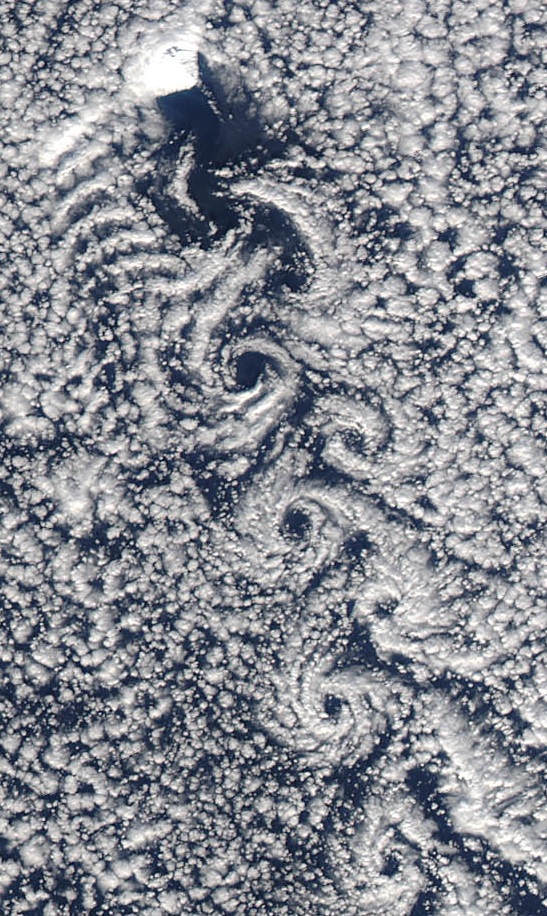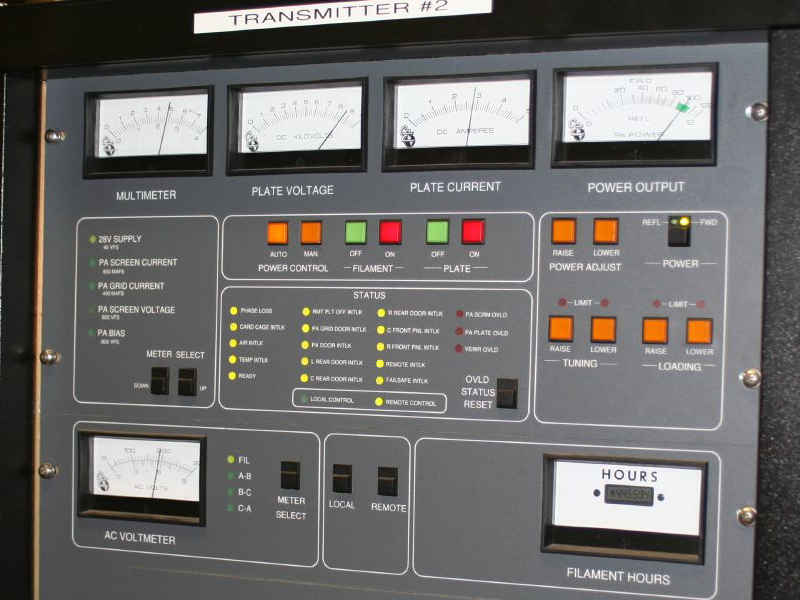|
LORAN-C Transmitter Jan Mayen
The LORAN-C transmitter Jan Mayen was a LORAN-CLoran-C has been established in 1960 transmission facility on the island of Jan Mayen at . The LORAN-C transmitter Jan Mayen used as an antenna had a 190-metre tall (625 ft) guyed mast. This mast was built as a replacement of a 190.5 metre tall mast, which collapsed in a storm on 8 October, 1980 as the result of low tension on the guy-wires. The guy-wires were adjusted by personnel from the USCG who mixed up pounds and kilograms. Both transmitters on Jan Mayen, together with the other Norwegian LORAN-C transmitters at Bø, and those at Eiði in the Danish Faroe Islands, were shut off at midnight on 31 December, 2015. The transmitter was demolished in 2017. See also * List of masts The tallest structure in the world is the Burj Khalifa skyscraper at . Listed are guyed masts (such as telecommunication masts), self-supporting towers (such as the CN Tower), skyscrapers (such as the Willis Tower), oil platforms, electri ... [...More Info...] [...Related Items...] OR: [Wikipedia] [Google] [Baidu] |
LORAN-C
Loran-C is a hyperbolic radio navigation system that allows a receiver to determine its position by listening to low frequency radio signals that are transmitted by fixed land-based radio beacons. Loran-C combined two different techniques to provide a signal that was both long-range and highly accurate, features that had been incompatible. Its disadvantage was the expense of the equipment needed to interpret the signals, which meant that Loran-C was used primarily by militaries after it was introduced in 1957. By the 1970s, the cost, weight and size of electronics needed to implement Loran-C had been dramatically reduced because of the introduction of solid-state electronics and, from the mid-1970s, early microcontrollers to process the signal. Low-cost and easy-to-use Loran-C units became common from the late 1970s, especially in the early 1980s, and the earlier LORAN system was discontinued in favor of installing more Loran-C stations around the world. Loran-C became one ... [...More Info...] [...Related Items...] OR: [Wikipedia] [Google] [Baidu] |
Jan Mayen
Jan Mayen () is a Norwegian volcanic island in the Arctic Ocean with no permanent population. It is long (southwest-northeast) and in area, partly covered by glaciers (an area of around the Beerenberg volcano). It has two parts: larger northeast Nord-Jan and smaller Sør-Jan, linked by a wide isthmus. It lies northeast of Iceland (495 km 05 miNE of Kolbeinsey), east of central Greenland, and west of the North Cape, Norway. The island is mountainous, the highest summit being the Beerenberg volcano in the north. The isthmus is the location of the two largest lakes of the island, Sørlaguna (South Lagoon) and Nordlaguna (North Lagoon). A third lake is called Ullerenglaguna (Ullereng Lagoon). Jan Mayen was formed by the Jan Mayen hotspot and is defined by geologists as a separate continent. Although administered separately, in the ISO 3166-1 standard, Jan Mayen and Svalbard are collectively designated as '' Svalbard and Jan Mayen'', with the two-letter country code ... [...More Info...] [...Related Items...] OR: [Wikipedia] [Google] [Baidu] |
Guy-wire
A guy-wire, guy-line, guy-rope, or stay, also called simply a guy, is a tensioned cable designed to add stability to a free-standing structure. They are used commonly for ship masts, radio masts, wind turbines, utility poles, and tents. A thin vertical mast supported by guy wires is called a guyed mast. Structures that support antennas are frequently of a lattice construction and are called " towers". One end of the guy is attached to the structure, and the other is anchored to the ground at some distance from the mast or tower base. The tension in the diagonal guy-wire, combined with the compression and buckling strength of the structure, allows the structure to withstand lateral loads such as wind or the weight of cantilevered structures. They are installed radially, usually at equal angles about the structure, in trios and quads. As the tower leans a bit due to the wind force, the increased guy tension is resolved into a compression force in the tower or mast ... [...More Info...] [...Related Items...] OR: [Wikipedia] [Google] [Baidu] |
United States Coast Guard
The United States Coast Guard (USCG) is the maritime security, search and rescue, and law enforcement service branch of the United States Armed Forces and one of the country's eight uniformed services. The service is a maritime, military, multi-mission service unique among the United States military branches for having a maritime law enforcement mission with jurisdiction in both domestic and international waters and a federal regulatory agency mission as part of its duties. It is the largest and most powerful coast guard in the world, rivaling the capabilities and size of most navies. The U.S. Coast Guard is a humanitarian and security service. It protects the United States' borders and economic and security interests abroad; and defends its sovereignty by safeguarding sea lines of communication and commerce across vast territorial waters spanning 95,000 miles of coastline and its Exclusive Economic Zone. With national and economic security depending upon open global t ... [...More Info...] [...Related Items...] OR: [Wikipedia] [Google] [Baidu] |
Bø, Telemark
Bø is a village and municipality in Telemark county, Norway. It is part of the traditional region of Midt-Telemark, but was historically regarded as part of Grenland. The administrative centre of the municipality is the village of Bø i Telemark ("Bø in Telemark"). Bø has been a settlement since ancient times, a parish since the middle ages and became a municipality (''formannskapsdistrikt'') in 1838. The area of Lunde was separated from Bø in 1867 to become a separate municipality. Bø has a population of 5,977 (2015). Bø's economy is mainly based on agriculture, forestry, tourism, education and public administration. Bø has the character of a university town and is home to one of the principal campuses of the University of Southeast Norway; it was also the seat of one of the university's three predecessor institutions, Telemark University College. Bø is well known for its cultural traditions within traditional music and artisanship, and its central position within Nor ... [...More Info...] [...Related Items...] OR: [Wikipedia] [Google] [Baidu] |
LORAN-C Transmitter Ejde
LORAN-C transmitter Ejde was the Master station of the Ejde LORAN-C Chain ( GRI 9007). It used a transmission power of 400 kW. Ejde LORAN-C transmitter, situated near Eiði Eiði (''Northern Faroese'' �ɔiːjɪ) is a village located on the north-west tip of Eysturoy in the Faroe Islands. It is the seat of Eiði Municipality. It is located 4 km north of Ljósá and 6.5 km west of Funningur. History Eiði was first ... at (). Ejde LORAN-C transmitter used as antenna a 190.5 metre ( 625 ft) tall mast radiator. In 1962 the mast of LORAN-C transmitter Ejde collapsed as a result of a slipping guy rope. The mast has been demolished. External links * http://www.tech-service.net/loran/LORAN-1.XLS * http://www.megapulse.com/chaininfo.html {{Eiði Municipality LORAN-C transmitters Buildings and structures in Eiði Municipality ... [...More Info...] [...Related Items...] OR: [Wikipedia] [Google] [Baidu] |
Faroe Islands
The Faroe Islands ( ), or simply the Faroes ( fo, Føroyar ; da, Færøerne ), are a North Atlantic archipelago, island group and an autonomous territory of the Danish Realm, Kingdom of Denmark. They are located north-northwest of Scotland, and about halfway between Norway ( away) and Iceland ( away). The islands form part of the Kingdom of Denmark, along with mainland Denmark and Greenland. The islands have a total area of about with a population of 54,000 as of June 2022. The terrain is rugged, and the Oceanic climate#Subpolar variety (Cfc), subpolar oceanic climate (Cfc) is windy, wet, cloudy, and cool. Temperatures for such a northerly climate are moderated by the Gulf Stream, averaging above freezing throughout the year, and hovering around in summer and 5 °C (41 °F) in winter. The northerly latitude also results in perpetual civil twilight during summer nights and very short winter days. Between 1035 and 1814, the Faroe Islands were part of the Kingdo ... [...More Info...] [...Related Items...] OR: [Wikipedia] [Google] [Baidu] |
List Of Masts
The tallest structure in the world is the Burj Khalifa skyscraper at . Listed are guyed masts (such as telecommunication masts), self-supporting towers (such as the CN Tower), skyscrapers (such as the Willis Tower), oil platforms, electricity transmission towers, and bridge support towers. This list is organized by absolute height. See List of tallest buildings and structures, List of tallest freestanding structures and List of tallest buildings and List of tallest towers for additional information about these types of structures. Terminology Terminological and listing criteria follow Council on Tall Buildings and Urban Habitat definitions. Guyed masts are differentiated from towers – the latter not featuring any guy wires or other support structures; and buildings are differentiated from towers – the former having at least 50% of occupiable floor space although both are self-supporting structures. List by height This list includes structures with a minimum height of ... [...More Info...] [...Related Items...] OR: [Wikipedia] [Google] [Baidu] |
Transmitter Sites In Norway
In electronics and telecommunications, a radio transmitter or just transmitter is an electronic device which produces radio waves with an antenna. The transmitter itself generates a radio frequency alternating current, which is applied to the antenna. When excited by this alternating current, the antenna radiates radio waves. Transmitters are necessary component parts of all electronic devices that communicate by radio, such as radio and television broadcasting stations, cell phones, walkie-talkies, wireless computer networks, Bluetooth enabled devices, garage door openers, two-way radios in aircraft, ships, spacecraft, radar sets and navigational beacons. The term ''transmitter'' is usually limited to equipment that generates radio waves for communication purposes; or radiolocation, such as radar and navigational transmitters. Generators of radio waves for heating or industrial purposes, such as microwave ovens or diathermy equipment, are not usually called transmitters, even ... [...More Info...] [...Related Items...] OR: [Wikipedia] [Google] [Baidu] |





